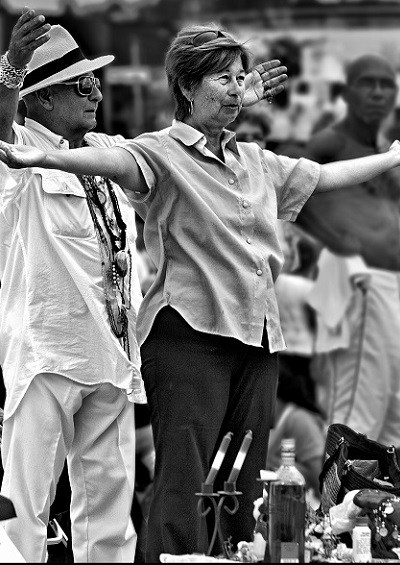Uruguay: Paying Homage to the Old Gods
Residents of Uruguay’s capital, Montevideo, gather to celebrate the festival of the sea goddess Yemanjá.
August 9, 2015

Ana Maria Robles is a veterinary medic whose passion is photography. “I like to know the stories and the diversity of ways of life of people. We may look different, but in essence, we are one,” she says.
Every year on the second day of February, a large crowd gathers at Ramirez beach in the Uruguayan capital, Montevideo, to celebrate the festival of Yemanjá, an African sea goddess who protects fishermen, symbolizes motherhood and owns all the sea’s fruits and riches.
Many people bring offerings to thank her and ask for her blessing and protection in the year ahead. Some of these are placed on small altars lit with candles, others are put into small floats that are then released onto the sea.
Text and photographs by Ana Maria Robles
At Ramirez beach, thousands of people gather to celebrate their annual tribute to Yemanjá.
Candombé music, an inheritance of Montevideo’s Afro-Uruguayan population, plays throughout the day. Dancers moves in circles, searching for the trance that will help them connect with Yemanjá.
A woman prays at one of the many small altars assembled on the beach.
Many people dress up specially for the day in robes of white or light blue, Uruguay’s national colors.
Although originally a festival of Uruguay’s African population, Yemanjá is now celebrated by people from all parts of Montevidean society.
 Ana Maria Robles is a veterinary medic whose passion is photography. “I like to know the stories and the diversity of ways of life of people. We may look different, but in essence, we are one,” she says.
Ana Maria Robles is a veterinary medic whose passion is photography. “I like to know the stories and the diversity of ways of life of people. We may look different, but in essence, we are one,” she says.The Other Hundred is a unique photo-book project (order here) aimed as a counterpoint to the Forbes 100 and other media rich lists by telling the stories of people around the world who are not rich but who deserve to be celebrated.
Its 100 photo-stories move beyond the stereotypes and cliches that fill so much of the world’s media to explore the lives of people whose aspirations and achievements are at least as noteworthy as any member of the world’s richest 1,000.
 Selected from 11,000 images shot in 158 countries and submitted by nearly 1,500 photographers, The Other Hundred celebrates those who will never find themselves on the world’s rich lists or celebrity websites.
Selected from 11,000 images shot in 158 countries and submitted by nearly 1,500 photographers, The Other Hundred celebrates those who will never find themselves on the world’s rich lists or celebrity websites.




